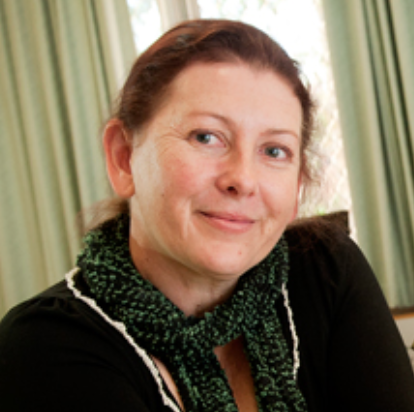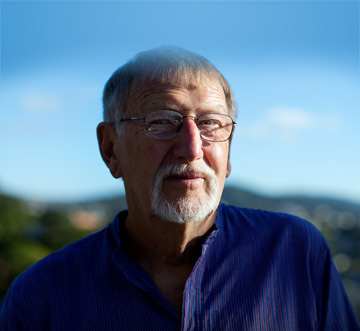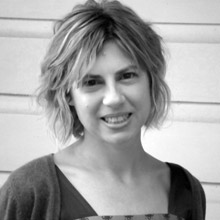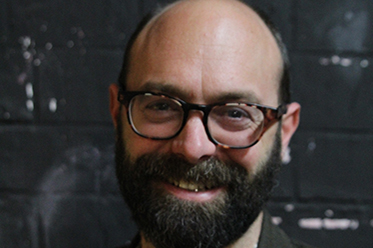Practitioners' Voices in Classical Reception Studies
ISSN 1756-5049
You are here
- Home
- Past Issues
- Issue 8 (2017)
- Special Issue: Australasian Practitioners
Special Issue: Australasian Practitioners
This special issue of Practitioners’ Voices in Classical Reception Studies comprises of three conversations with Australasian practitioners conducted during 2016.
Editor’s Introduction, by Marguerite Johnson

Although there is extensive scholarship on Australian and New Zealand literature, film, theatre and art, there is little on Australasian Classical Reception. Two notable publications, both edited by Elizabeth Hale, on the productions of classical texts by the Sydney Theatre Company, marked an important milestone in the discipline. The collections, on Barrie Kosky’s The Lost Echo (2006) and The Women of Troy (2008), were published in major journals (Australasian Drama Studies and Didaskalia) and established an international readership of, and interest in the field. Additionally, artists such as Marian Maguire (1962-), whose lithographs and etchings merge Greek vase paintings with New Zealand colonial history, have been the subject of Classical Reception scholarship, as has the work of poets such as Anna Jackson (featured herein), James K. Baxter (1926-1972) and C. K. Stead (1932-), and novelists such as David Malouf (1934-).
The momentum in Australasian Classical Reception Studies during the first decades of the twenty-first century is indicative of a much longer history of engagements with the ancient Mediterranean. Since the colonialisation of Australia and New Zealand, there have been discernible, significant and multifarious markers of ancient Greece and Rome inscribed on Australasian landscapes. Many British and Europeans were familiar with Classically-inspired imperial philosophies, the ancient canon, and the tenets behind an education system that privileged Greek and Latin. Colonial newspapers reviewed Greek tragedies and comedies, artists depicted the landscapes with deference to bucolic countrysides, and poets eulogised the scenery with songs overburdened with Classical imagery. The debt to Classicism was endemic as colonists sought to ‘civilise’ the newly ‘discovered’ lands through established, conservative, imperial models.
As modernity infiltrated Australasia, the twentieth century saw the reinvention of Classicism, as artists turned to interpretation, hybridisation, foreignisation and refiguration as a response to the conventional nature of Classical acculturation. This was a symbolically important gesture in the colonies in view of the perceived imperative to establish national identities separate from those imposed by imperialism. White Australasians began to challenge British hegemony in the wake of the Great War, and their poets began to mourn campaigns such as Gallipoli through recourse to more sombre expressions of Classicism. White Australians sought to shed their convict past in order to present new icons of nationhood that celebrated healthy, suntanned and athletic bodies, which found expression in Classical Realism. During the end of the inter-war period, for example, Charles Meere’s ‘Australian Beach Pattern’ (1940) modernised classical artistic precepts by recasting ancient statues as egalitarian ‘Aussies’ at play. While there remained a strong element of traditional Classicism in the works of artists such as Australian Norman Lindsay (1879-1969) and photographers such as New Zealand-born Harold Cazneaux (1878-1953), external artistic and political movements that championed experimentation and radicalism, transformed Antipodean ways of seeing ancient Greece and Rome. Artists such as Sidney Nolan (1917-1992) and Arthur Boyd (1920-1999) captured elements of the abject and even the banal in myths such as Leda and the Swan, while Baxter constantly sought to write and rewrite Classical narratives in New Zealand contexts.
The experimentations continue and as each era is marked by new politics, new cultures and new values, so too is the practitioner who engages with the Classical Tradition. One of the most significant developments in creative reworkings of antiquity is the melding of the conservativism of Classicism with the principles of feminism and post-colonialism. As colonial outposts, sometimes viewed as being at the end of the earth, and most definitely lacking the markers of ‘civilisation’ of the old country, New Zealand and Australia may be regarded as particularly fertile grounds for the birth of reactionary artistic movements, or at least intensive creative meditations on, and responses to oppression. While, of course, neither country is really unique in this respect, Classicism has been claimed and acculturated to express objections and shed light on alienation, racism and misogyny, particularly in post-colonial settings. New voices have consequently emerged, such as playwright Wesley Enoch, whose Black Medea (2005) refigured a revered example of Greek tragic theatre from the perspective of Indigenous Australians’ cultural and spiritual disenfranchisement. Previously, Louis Nowra’s play The Golden Age (1985) interwove urban legends of lost Tasmanian settlers with allegories of First Nation Tasmanians mixed with references to Iphigenia in Tauris.
In these three interviews, each practitioner discusses their use of ancient Greece and Rome in the creative process, both as sources of personal expression and broader, more intellectual and social endeavours. Phillip Mann, like many scholars and artists of his generation, emigrated to New Zealand from the motherland. As Professor of Drama Studies at Victoria University, Wellington until his academic retirement in 1998, Mann directed reinterpretations of Greek plays for New Zealand audiences. In the interview, John Davidson comments on Mann’s introduction of the Māori waiata into the choral element of Greek tragedy as “trailblazing” (although Mann rightly cautions against the temptation of the heavy overlaying of cultural comparisons). Mann is wonderfully honest about his passion for Classical references, particularly ones inspired by Roman culture, as evident in his Science Fiction tetralogy, A Land Fit for Heroes – a series Davidson extols, but Mann reminds him was very much overlooked by both readers and reviewers. What perhaps is most compelling about the interview is Mann’s discussion of his childhood, particularly his life as the sole child of a sole parent, which was marked by poverty but enriched by stories. While many reception scholars and scholars of the Classics per se often attribute their introduction to antiquity to formal education, Mann remembers a working-class mother’s role in instilling a love for the plays of Aeschylus, Euripides and Aristophanes.
In conversation with Maxine Lewis, New Zealand poet Anna Jackson discusses her introduction to Catullus through the translations of other scholars and poets, and the particular appeal of Stevie Smith’s ‘Catullus.’ Jackson explains her creative revisioning of Catullus’ poetry in Catullus for Children (2003), which was not as a Classicist working from the Latin but as someone “with an interest in reception and translation” who wanted to explore the element of game-playing underlying the poetry. Jackson also discusses the different imperatives that motivated her second Catullus collection, I, Clodia (2014), namely the appeal of exploring “narrative and dialogue” in creative praxis. Lewis’ interest in Jackson’s Catullus poetry in the context of New Zealand poets opens a dialogue on contemporary poets’ debt to, but more significantly, independence from references to Classical antiquity by established members of their own cultural canon.
Leanne Glass talks with Australian filmmaker Ben Ferris about his award-winning feature film, Penelope and the role of actual dreams in its creation (as well as in the film per se). The complexities behind the making of a film such as Penelope are at the centre of the conversation, with Ferris discussing issues around filming in Croatia, from audience response to the inclusion of a rape scene. The fascination at the heart of this interview may be seen to lie with the conversations around artistic allusions – what the viewer regards as strong intertextual references – and the corresponding responses of the writer/director. This culminates in showing the multi-layered use of sources, beginning with the ancient idea or image, which characterises the work of artists in the aftermath of post-modernism.
Marguerite Johnson
The University of Newcastle
Phillip Mann

Phillip Mann was born in North Yorkshire, and studied Drama and English at Manchester University. He has worked extensively in Theatre in Europe and America and established the first programme of Drama Studies at Victoria University of Wellington in 1970, where he was later made Professor of Drama. Recently he has been appointed MNZM (Member of the New Zealand Order of Merit). He takes a special pleasure in directing new plays and in finding ways of making Greek Classical Drama available to modern audiences. In addition to his theatre work, Phillip Mann is a freelance writer and has published Science Fiction novels as well as essays and works for younger readers.
This interview with John Davidson was recorded in Wellington on 21st October 2016.
Anna Jackson

Anna Jackson is a New Zealand poet whose six collections include Catullus for Children (2003) and I, Clodia (2014). She has an article, ‘Catullus in the Playground’ in Living Classics, ed. Stephen Harrison (OUP, 2009) and two articles on writing in response to the Classics coming out in 2017, ‘Clodia through the looking-glass,’ in Antipodean Antiquities (Bloomsbury) and ‘I, Clodia: I had a dream I was a ghost’ in From Athens to Aotearoa (Victoria University Press). An Associate Professor in English at Victoria University of Wellington, she has published several academic books on topics ranging from Children’s Gothic to Verse Biography.
This interview with Maxine Lewis was recorded on January 25th 2016 at the University of Auckland.
Photograph by Elvira Edmonds.
Ben Ferris

Ben Ferris is a film writer/director whose films have screened at festivals throughout the world (in Paris, Athens, New York, Tokyo, Karlovy Vary, Zagreb, Sarajevo, Skopje, Singapore, Sydney). His short film The Kitchen (2003) won the Grand Prix at the Akira Kurosawa Memorial Short Film Festival in Tokyo in 2005, and his short film Ascension (2004) won the Grand Prix at the 4th One Take Film Festival in Croatia in 2004.
His debut feature film Penelope, an Australian-Croatian co-production, screened in National Competition at the 56th Pula Film Festival in Croatia in 2009, and won a Van Gogh Award for Best Fantasy Film at the Amsterdam Film Festival in 2010. His second feature film, 57 Lawson (2016), captures daily life in a social housing building in Redfern, under the shadow of impending development. Ben is currently the Artistic Director of the Sydney Film School which he co-founded in 2004. He was the curator of the Sydney Cinémathèque in 2015, and his writings on cinema have been published worldwide in both French and English.
This interview with Leanne Glass was recorded via Skype on 13th January 2016.
Interviewer biographies
John Davidson was born in Lower Hutt and lives in Wellington. In 2010 he retired as Professor of Classics at Victoria University of Wellington where he was a colleague of Phillip Mann for many years.
Maxine Lewis is a Lecturer at the University of Auckland, specialising in Catullus' poetry and its reception in modern literature.
Leanne Glass was awarded her PhD in Classics in 2015 from The University of Newcastle, Australia for her thesis, National Identity, the Auteur and the Greek World on Film.